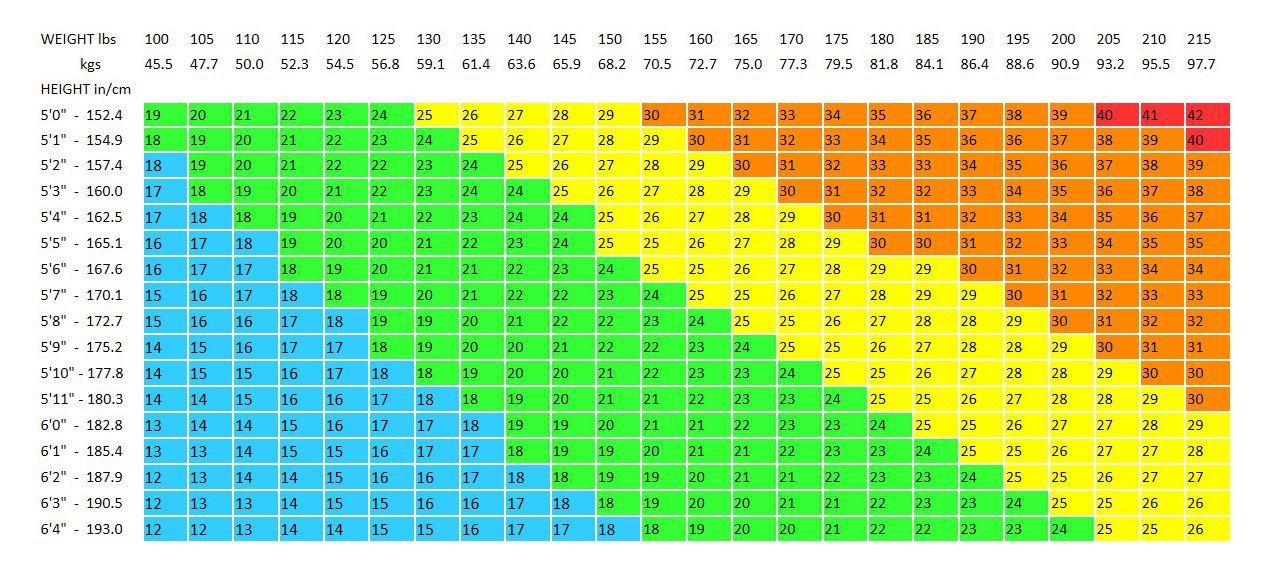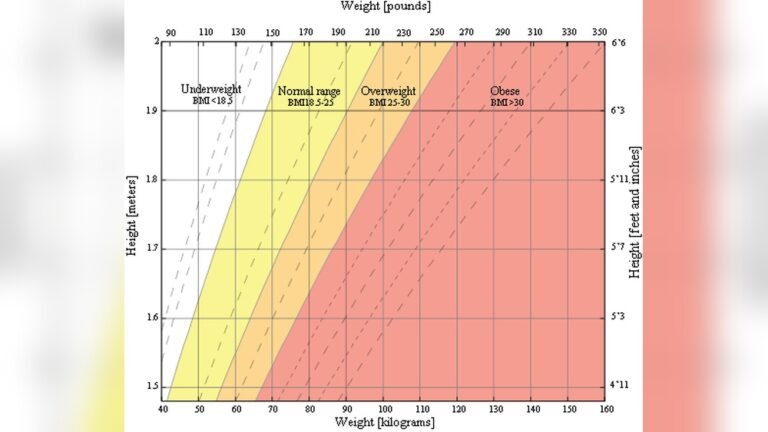Are you curious about how your age affects your Body Mass Index (BMI) and what your ideal BMI should be? Understanding your BMI in relation to your age can give you clearer insights into your overall health and help guide your fitness or weight goals.
But with so much conflicting information out there, how do you know what number to trust? This is where a BMI Age Calculator becomes your handy tool. It’s designed to give you a personalized BMI reading that considers your age, making it easier for you to understand what a healthy range looks like for your unique body.
Keep reading to discover how this simple calculator can empower you to take control of your health with confidence.

Credit: www.youtube.com
Bmi Basics
Understanding BMI basics helps you learn about your body’s health. BMI stands for Body Mass Index. It is a simple number based on your height and weight. This number gives an idea of whether your weight is healthy. BMI is widely used by doctors and health experts worldwide.
People of all ages use BMI to get quick health insights. It’s easy to calculate and does not require special tools. Still, knowing what BMI measures, its categories, and its limits is important. These facts make BMI more useful and clear.
What Bmi Measures
BMI measures the ratio of your weight to your height. It does not measure body fat directly. Instead, it estimates if your weight is in a healthy range. BMI helps identify if you are underweight, normal, overweight, or obese. This tool works best for most adults and children over two years old.
Bmi Categories
BMI is divided into categories to show weight status. A BMI below 18.5 means underweight. A BMI between 18.5 and 24.9 is normal weight. A BMI from 25 to 29.9 shows overweight. A BMI of 30 or higher means obesity. These categories help guide health decisions and goals.
Limitations Of Bmi
BMI does not tell the whole story about health. It does not account for muscle mass or body fat percentage. Some athletes may have a high BMI but low fat. BMI also does not consider age, sex, or bone structure. For a full health picture, consult a healthcare professional.
Age And Bmi
Age plays an important role in understanding Body Mass Index (BMI). BMI helps measure body fat based on height and weight. But age affects how BMI is interpreted for different groups. This section explains how age and BMI relate.
Bmi For Adults Vs. Children
BMI calculations differ for adults and children. Adults use fixed BMI ranges to define healthy weight. Children’s BMI changes as they grow. So, BMI percentiles compare a child’s BMI with others of the same age and sex. This helps track healthy growth patterns during childhood and adolescence.
Does Age Affect Bmi?
Age can influence BMI interpretation but not the formula. Adults have one BMI formula regardless of age. Children and teens need age-specific BMI charts. Older adults may have different body compositions, like less muscle. This can affect BMI meaning and health risks.
Bmi Changes Over Life Stages
BMI values change through life stages. Babies and toddlers gain weight rapidly. Children’s BMI rises and falls during growth spurts. Adults usually have more stable BMI but can gain weight with age. Seniors may lose muscle and gain fat, causing BMI to shift. Tracking these changes helps understand health at each stage.
Calculating Bmi With Age
Body Mass Index (BMI) measures body fat using height and weight. Age plays a role in interpreting BMI results.
As people grow older, body composition changes. Muscle mass tends to decrease, and fat may increase. This shift can affect BMI values.
Understanding how to calculate BMI with age helps get more accurate health insights. It shows if weight is healthy for your age group.
Standard Bmi Calculation
The standard BMI formula is weight in kilograms divided by height in meters squared.
This method does not change based on age. It applies to adults of all ages.
Doctors use it as a quick screening tool to categorize weight status.
Age-adjusted Bmi Methods
Some experts suggest adjusting BMI for age to reflect body changes over time.
These methods may lower the BMI threshold for older adults. This accounts for muscle loss and fat gain.
Age-adjusted BMI offers a clearer picture of health risks in older people.
Using Online Bmi Calculators
Many websites offer BMI calculators that include age in their analysis.
These tools provide age-specific BMI ranges to improve accuracy.
Enter your height, weight, and age for quick, personalized results.

Credit: www.hdfclife.com
Interpreting Bmi Results
Understanding your BMI results is key to knowing more about your health. BMI, or Body Mass Index, helps estimate whether your weight is in a healthy range. It compares your weight to your height. Interpreting these numbers correctly can guide you toward better health choices.
Healthy Bmi Ranges By Age
BMI ranges vary slightly by age, especially for children and teens. For adults, a BMI between 18.5 and 24.9 is considered healthy. Younger people might have different healthy ranges as their bodies grow. Older adults may have a slightly higher healthy BMI range. Age helps give context but does not change the basic BMI categories.
Bmi And Body Composition
BMI does not measure body fat directly. It does not separate muscle from fat. Athletes or muscular people may have a high BMI but low body fat. This means BMI can sometimes misclassify health. Use BMI as a starting point, not the full picture. Other tools like body fat percentage give more detail.
When To Seek Medical Advice
Talk to a healthcare provider if your BMI is very low or very high. Sudden weight changes or health problems also need medical advice. Professionals can offer tests and advice beyond BMI. They help create a plan that fits your health needs. Never ignore symptoms or concerns about your weight or health.
Beyond Bmi
BMI is a simple tool to estimate body weight relative to height. It offers a quick look at weight categories like underweight or overweight. Still, BMI does not capture the full picture of health. Other factors impact your well-being more deeply than just a number. Exploring these factors helps you understand your body better.
Age and muscle changes affect how BMI relates to health. People with strong muscles may have a high BMI but low body fat. This makes BMI alone less accurate for some individuals. To get a clearer health view, other metrics must be considered.
Muscle Mass And Fat Percentage
Muscle weighs more than fat. A muscular person can have a high BMI but be very fit. Fat percentage shows how much of your body is fat versus muscle or bone. Measuring fat percentage gives a better idea of health risks. It helps spot hidden fat around organs, which BMI cannot do. Tracking fat and muscle changes aids in planning better fitness goals.
Alternative Health Metrics
Other numbers add depth to health checks. Waist circumference tells about belly fat, linked to heart disease. Waist-to-hip ratio compares waist size to hips, showing fat distribution. Body fat scales and skinfold tests estimate fat more accurately. Blood pressure, cholesterol, and blood sugar levels also matter. These metrics together paint a fuller health picture than BMI alone.
Integrating Bmi With Other Tools
Use BMI as a starting point, not the only measure. Combine it with muscle and fat tests for clear insight. Regular health screenings add important data. Tracking weight, diet, and activity helps understand changes over time. Talk with health professionals to interpret all results well. This approach supports smarter, personalized health decisions.
:max_bytes(150000):strip_icc()/VWH_illustration_BAF8FF3-8c364807534d4b52adc4a9d649036dee.png)
Credit: www.verywellhealth.com
Practical Tips
Practical tips help you use the BMI Age Calculator effectively. They guide you to understand your body better and improve your health step by step. Tracking your BMI over time, setting clear health goals, and consulting healthcare professionals are key actions. These steps make your journey easier and safer.
Tracking Bmi Over Time
Regularly check your BMI to see changes over weeks or months. Record your results to notice trends and patterns. This helps you understand how your lifestyle affects your weight. Small changes show progress. Tracking keeps you motivated and aware.
Setting Realistic Health Goals
Set simple and achievable goals based on your BMI results. Choose targets like losing a few pounds or maintaining your current weight. Avoid aiming for quick, drastic changes. Realistic goals help you stay focused and prevent frustration. Celebrate small wins to keep going strong.
Consulting Healthcare Professionals
Talk to doctors or dietitians about your BMI and health goals. They provide advice tailored to your body and needs. Professionals check for other health factors beyond BMI. Their guidance ensures safe and effective weight management. Always seek expert help before major changes.
Conclusion
Knowing your BMI helps you understand your body weight better. It gives a quick look at your health status. Remember, BMI does not show muscle or fat percentage. Age may influence health, but BMI stays the same for adults. Use the BMI Age Calculator as a helpful guide.
Always talk to a doctor for detailed advice. Stay aware of your body and make healthy choices daily. This simple tool supports your path to better wellness.



